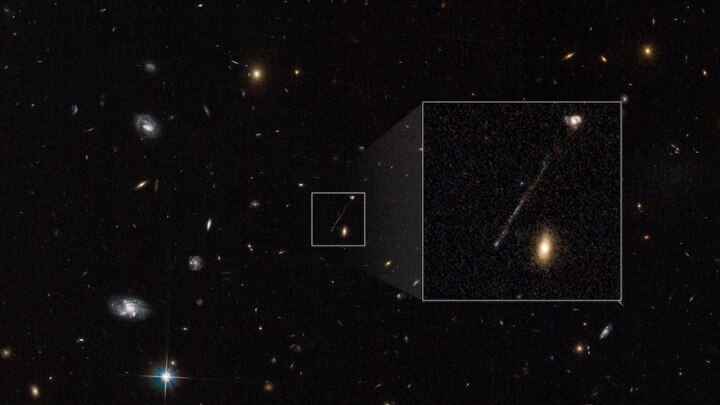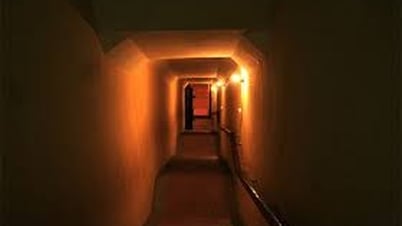Astronomers have for the first time detected a black hole flying through interstellar space at 5.6 million kilometers per hour (4,500 times the speed of sound). If it were in the Solar System, the black hole could travel from Earth to the Moon in 14 minutes, according to NASA .
The team discovered the black hole while using the Hubble Space Telescope to observe the dwarf galaxy RCP 28, about 7.5 billion light-years from Earth. The black hole may have been ejected from its home galaxy by two other black holes and is wandering in the interstellar space.

Image of strange star trails captured by the Hubble telescope. (Photo: NASA)
Instead of swallowing stars, the black hole speeds up and creates a trail of stars in space more than 200,000 light years long. The trail points out from the center of a galaxy, where a supermassive black hole is usually located, according to a study published in the Astrophysical Journal Letters on April 6.
Researchers believe the gas could be being shocked and heated by the motion of the black hole, or it could be radiation from an accretion disk surrounding the black hole.
“We think we are seeing a formation after the black hole, where the gas cools and can form stars. We are closely observing star formation following the black hole,” said Pieter van Dokkum, a researcher at Yale University.
“I just scanned the Hubble image and noticed there was a little streak. I thought it was a cosmic ray hitting the camera. But when we removed the cosmic rays, we realized the streak was still there. It was unlike anything we had ever seen before,” he added.
Noticing the oddity, van Dokkum and his team made spectroscopic observations with the W. M. Keck Observatory in Hawaii. He described the starburst as “quite astonishing, very, very bright and very unusual.”
The researchers will conduct follow-up observations with NASA's James Webb Space Telescope and the Chandra X-ray Observatory to confirm the black hole explanation.
NASA's upcoming Nancy Grace Roman Space Telescope will provide a clearer view of the universe, possibly finding star trails like never before.
(Source: Zing News)
Useful
Emotion
Creative
Unique
Wrath
Source



























![[Photo] National Assembly Chairman Tran Thanh Man visits Vietnamese Heroic Mother Ta Thi Tran](https://vphoto.vietnam.vn/thumb/1200x675/vietnam/resource/IMAGE/2025/7/20/765c0bd057dd44ad83ab89fe0255b783)






































































Comment (0)